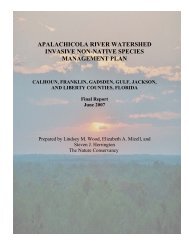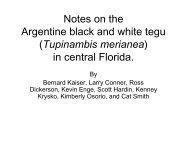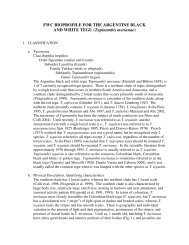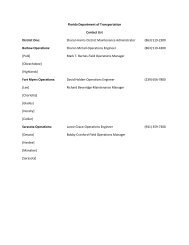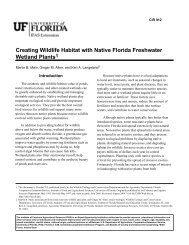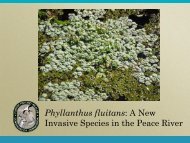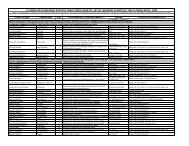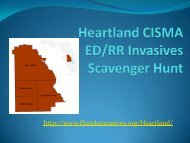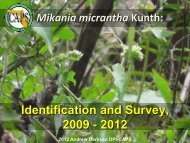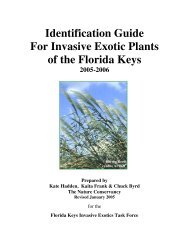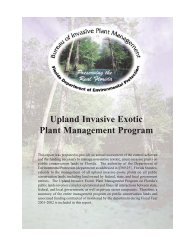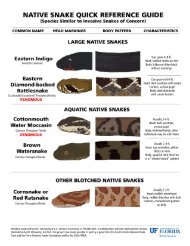2003-2004 - Florida Invasive Species Partnership
2003-2004 - Florida Invasive Species Partnership
2003-2004 - Florida Invasive Species Partnership
Create successful ePaper yourself
Turn your PDF publications into a flip-book with our unique Google optimized e-Paper software.
John D. Pennekamp Coral Reef State Park<br />
County: Monroe<br />
PCL Size: 2,350 acres<br />
Project ID: FK-042 5.8 acres $36,648.34<br />
Project Manager: <strong>Florida</strong> Park Service (DEP)<br />
James G. Duquesnel, Park Biologist<br />
P. O. Box 487, Key Largo, <strong>Florida</strong> 33037<br />
Phone: 305-451-1202, Fax: 305-853-3555<br />
E-mail: james.g.duquesnel@dep.state.fl.us<br />
The native vegetation of Key Largo derives primarily from West Indian and Caribbean origin. The<br />
state purchased the park largely to provide habitat for migratory birds, including the state-listed<br />
white-crowned pigeon, and to protect nearby marine communities from shoreline development. The<br />
park also holds a large number of state-listed plants, especially the endangered Keys’ Indigo<br />
(Indigofera keyensis) and wild cotton (Gossypium hirsutum). The project area comprised three park<br />
sites, referred to as Key Largo Narrows, Madiera Village, and Dynamite Docks.<br />
28<br />
Target Plants Common Name FLEPPC Rank Treatment Herbicide<br />
Albizia lebbeck woman’s tongue Category I cut stump Garlon 4<br />
Colubrina asiatica latherleaf Category I basal Garlon 4<br />
Manilkara zapota sapodilla Category I cut stump Garlon 4<br />
Schinus terebinthifolius Brazilian pepper Category I basal Garlon 4<br />
Hibiscus tiliaceus mahoe Category II cut stump Garlon 4<br />
Leucaena leucocephala lead tree Category II basal Garlon 4



